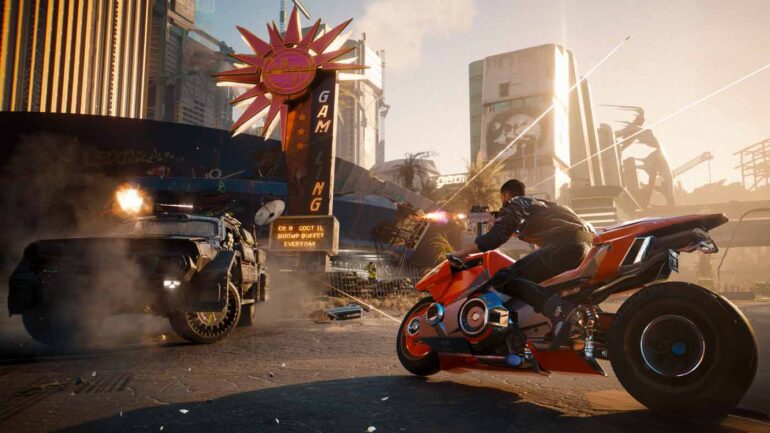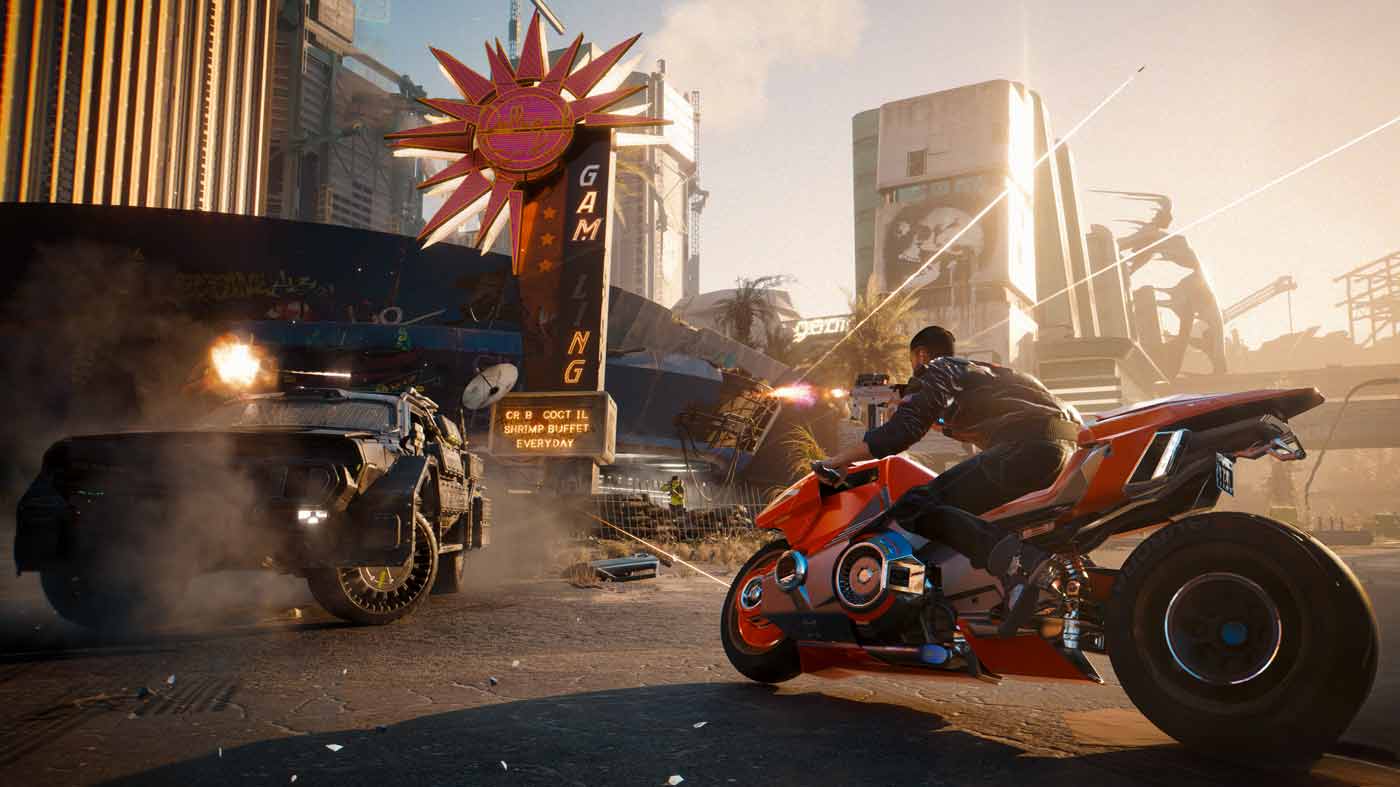The hours I spent in Night City a few years ago, as well as the review-in-progress I’d penned as a placeholder were quickly lost to the noise and vitriol that surrounded the game at launch. The fact I never doubled back to finish it has been the source of tongue-in-cheek comments on our podcast, but it’s also a source of great disappointment for me.
Although it over promised and under delivered at the time, and its performance on ageing hardware was nothing short of abysmal, there was still a faint outline of a phenomenal roleplaying game. Like a never-ending public relations tug of war, the team has wrestled back good will in the time since, with performance and optimisation coming a long way.
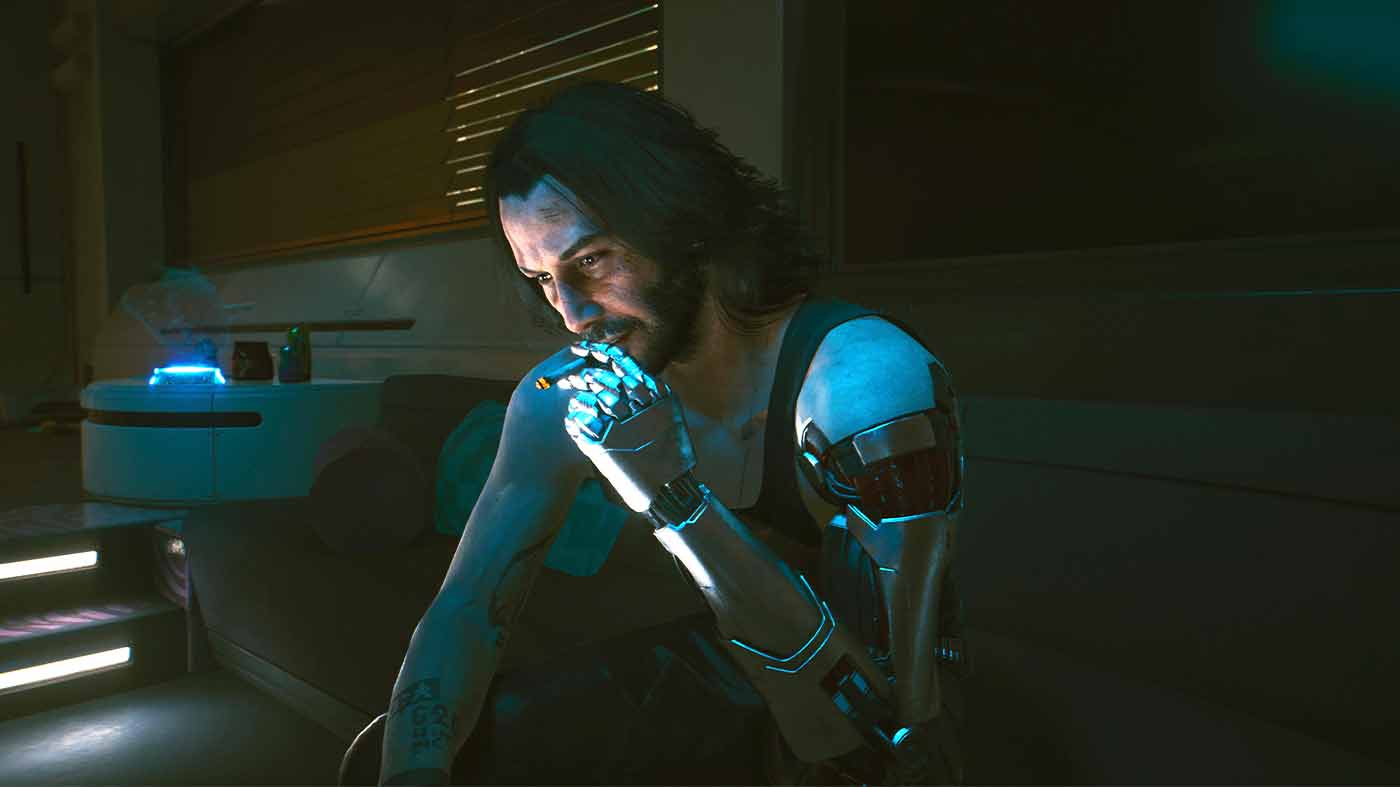
Although this piece will largely be about the Phantom Liberty expansion, which sees V plunge knee-deep into a thrilling narrative full of high stake political gambits, the real shining star in a swathe of updates coming to Cyberpunk is its literal, and free, game-changing 2.0 rollout. It presents a more focused approach to build design, and its streamlined system of fewer but better perks feels more quality over quantity than it did beforehand.
So substantial is the shift, the team are offering all players a one-time reset of their attributes to re-roll throughout the improved trees. There has also been a body of work put into making punishment fit the crime in Night City, with an overhauled police response system making it both more dynamic and fun for those turning out like cyberpsychos in the streets.
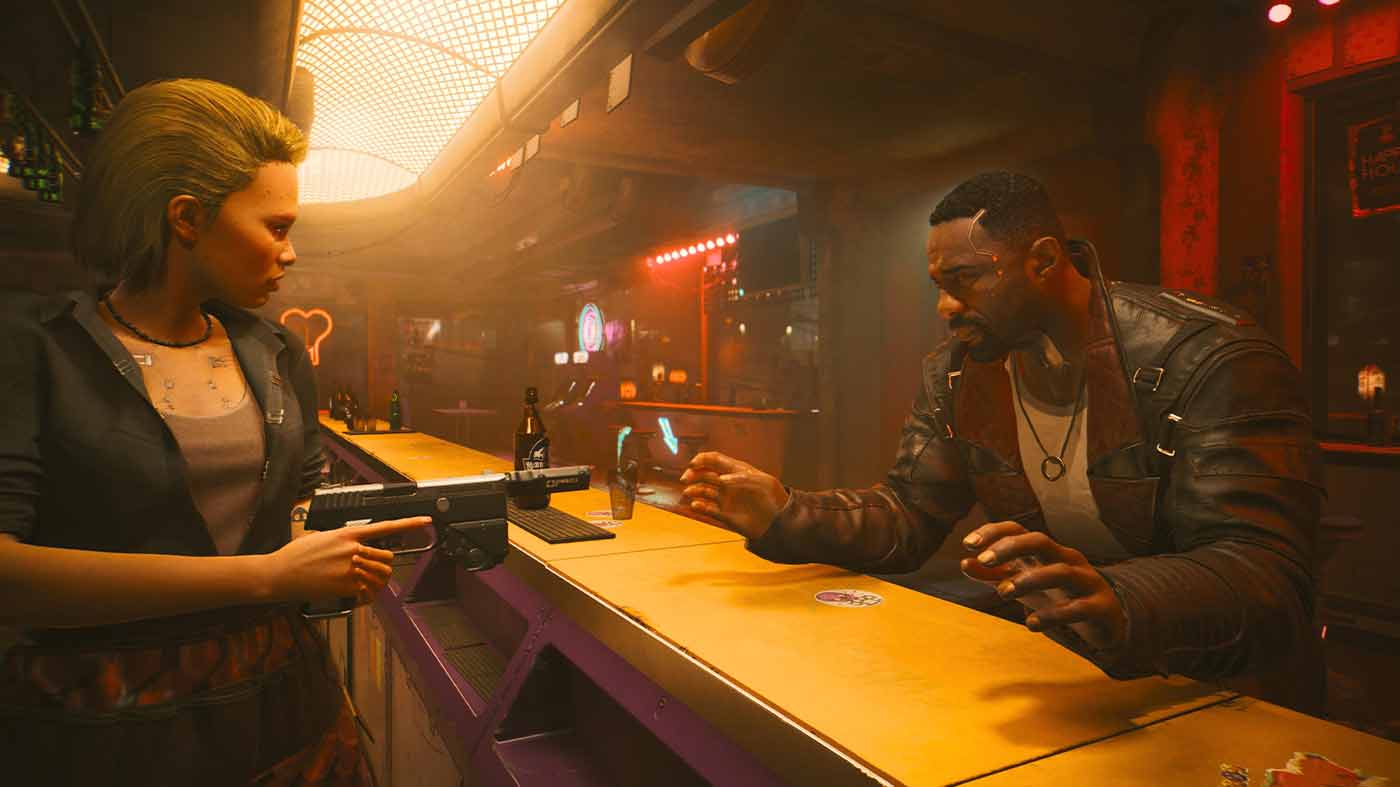
The beautiful thing about all of these quality changes the team have made is that Phantom Liberty feels like a showcase event for all of them. It’s a spectacular expansion that displays, in full, the mountain of work done by the team to create a more dynamic, living playground for people to live in.
I declared CD Projekt Red “world building luminaries” in my now outdated quasi-critique of what this game was prior to its launch, and Phantom Liberty further cements this as fact, expanding the play space of Night City to include Dogtown. This slum we’re dropped into as players is a now-walled off slice of Pacifica, annexed by Kurt Hansen, who rules with an iron fist, during the war. It’s very much the lawless, chaotic armpit of Night City, full of black market chrome and over eager militia.
It’s here a vast majority of Phantom Liberty’s narrative unfolds, and I was riveted from the second Songbird, an exceptionally talented netrunner, unseats Keanu Reeves’ Johnny Silverhand for control of your literal mindshare and promises to rescue you from the Relic turning your brain to soup in exchange for rescuing the President of the New United States.
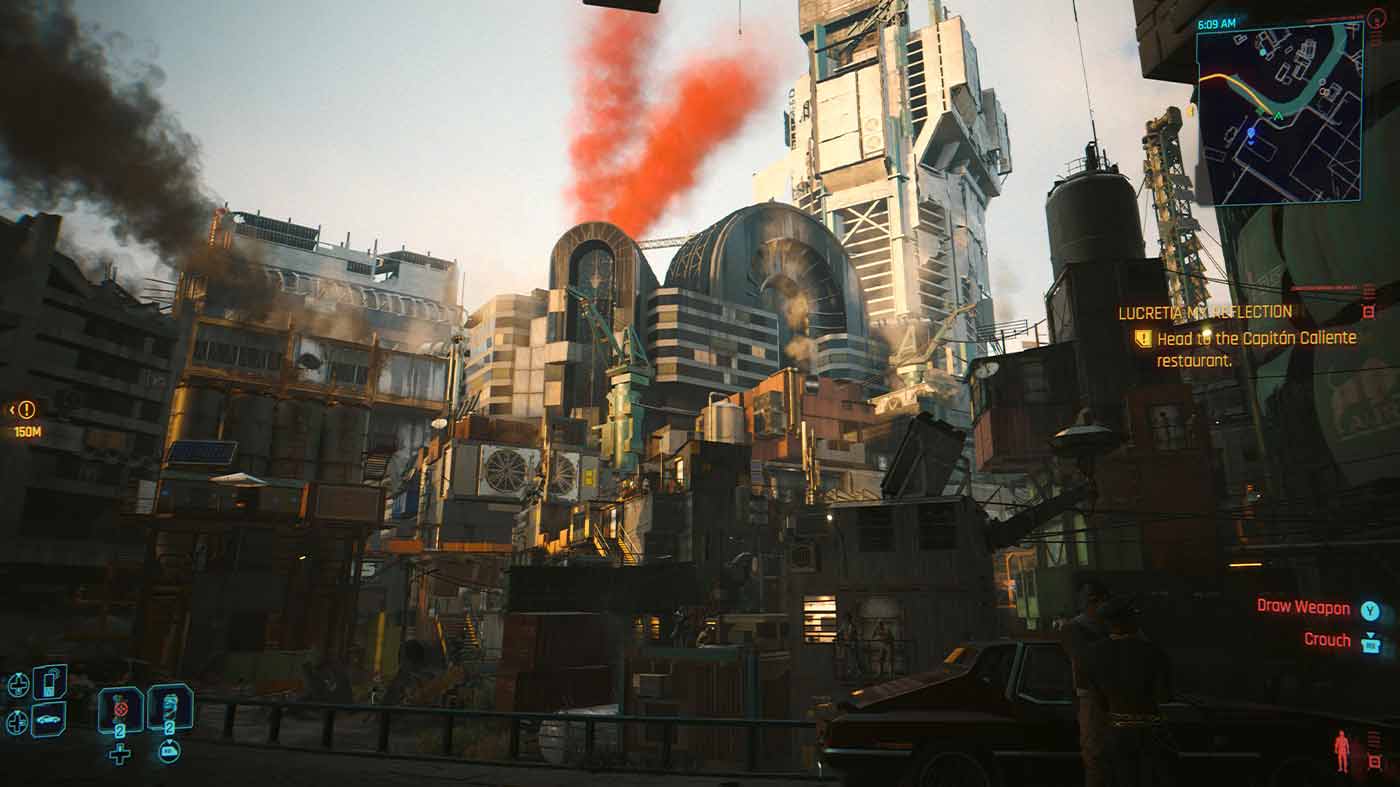
What unfolds is a genuinely rich tapestry of espionage and spycraft that wouldn’t be amiss in a John le Carré novel. I was delighted at how invigorated it felt for this game’s world despite being so baked into it, right down to every minor detail. A lot of the intrigue is shouldered by Idris Elba’s Solomon Reed, who is one cool motherfucker—which, as someone who’s endured Cats, isn’t a sentence I thought I could ever say again. He is an incredibly nuanced character whose motivations are shrouded in doubt up until the very end, and although his turn leans a little hard on the morose, self-pitying archetype, his cool demeanour and seamless assumption of the “spy role” here could easily serve as his Bond audition.
The campaign itself has the far-reaching consequences and explosive horsepower to match a particular military-shooter franchise, especially in its early chapters. That said, Phantom Liberty goes to some unexpected places and serves up its share of tense, contemplative, and surprisingly scary moments throughout.
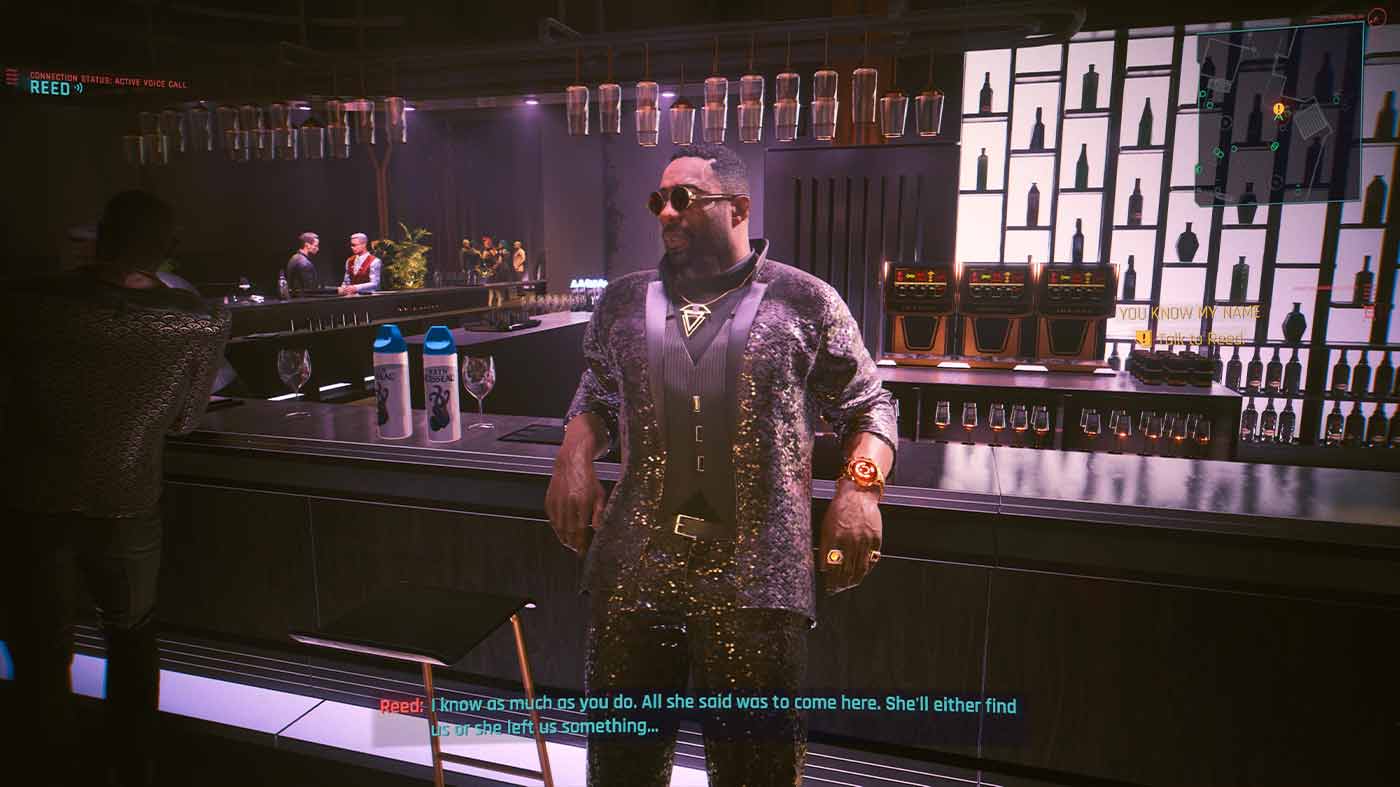
What I like is how CD Projekt Red have managed to seamlessly slot V’s Dogtown escapades into what is effectively the middle of Cyberpunk’s enormous, branching story and have it work. I’d assumed it’d tack onto the backend of the already-existing campaign and serve as a footnote for the game at large, however it offers up its own questline that fits in after you’re first exposed, through Mama Brigitte, to cyberspace and the concept of the Blackwall. Like other so-called “main” questlines in the game that involve key players like Goro Takemura and Panam, Phantom Liberty’s culminates a new, but wholly satisfying, ending for the game.
Similar to the skill reset provided to returning players, the effort to onboard first-timers faster is certainly commendable. Those new to the game can skip the entirety of the first act and receive a gift of twenty levels and a fistful of perks to roll into Dogtown with.
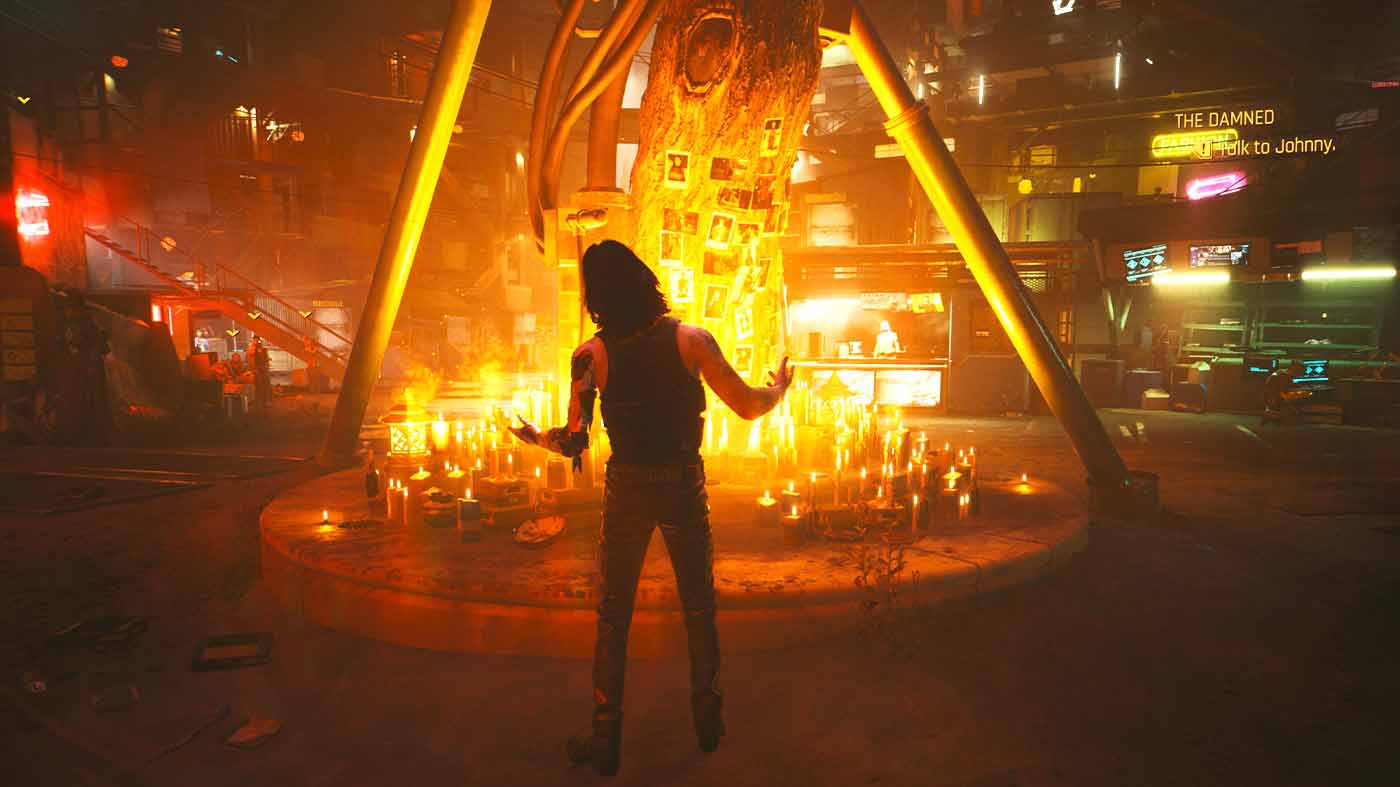
During the expansion’s explosive opening chapter, you breach the district’s walls by treating a refuse chute as a waterslide and landing gracelessly in a mountain of trash. This feels appropriately Dogtown. The town, like its oppressive overlord, has a big personality, placing the class gap at the forefront like no other district really has. Hansen’s decadent Black Sapphire serves as a retreat for the minted, while the safety and high-ground of the football stadium is reserved for his seedy operation. The slums, stacks, and streets are left to the indigent to pick at for scraps, and I’m impressed at how alive and realised it feels. Foot traffic and general street chatter feels more alive than I’d seen before, it’s dense and bustling.
One feature that Phantom Liberty attempts to spotlight within its campaign and gigs are the dynamic car chases and vehicular combat. Although I’m sure it’s a ride once machine turrets are mounted to your bonnet, firing from a moving car doesn’t feel great at a top level. I constantly found myself at war with the dualling mechanics of simply staying on the road and wrestling the camera to ping slugs off of their cars with what felt like a pea shooter at times. For me, it kind of sapped the thrill from any pursuit I got into.
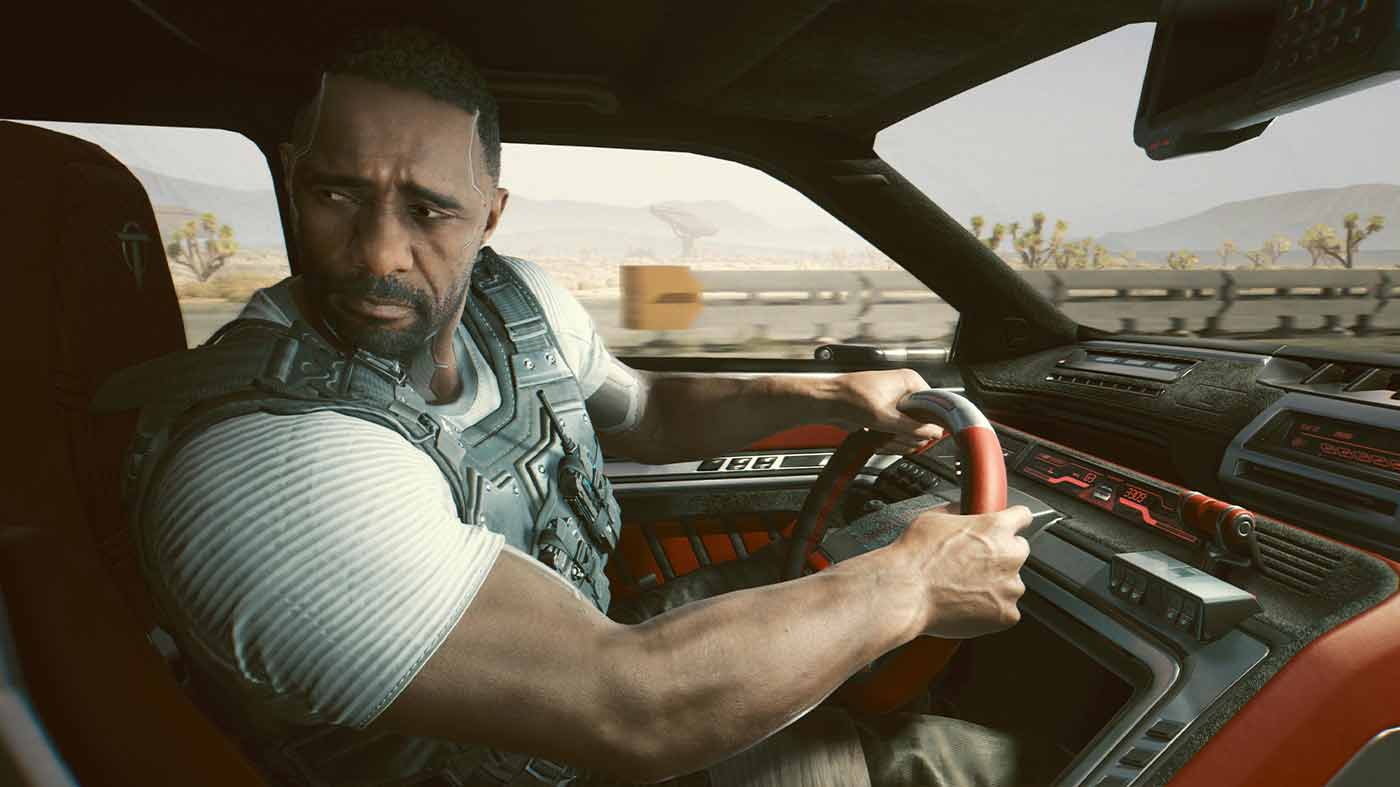
Although I never encountered issues throughout the main questline, a couple of the gigs I got roped into had dodgy objective triggers that had me running around in circles thinking I’d missed something, only for the issue to shake loose with a simple reload. Despite these minor issues, Cyberpunk is in the best shape it’s ever been.
All in all, I’ve absolutely loved my return trip to Night City.
There’s no question that Phantom Liberty, hand-in-hand with the enormous 2.0 upgrade, delivers the Cyberpunk experience that was promised all along. Should this have been the game we got years ago? Perhaps, but the persistence of this team to course correct and transform what was once flatlining into something that’s a must play for role-playing fans deserves praise.


